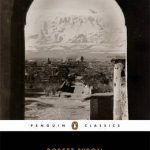Disclosure : This site contains affiliate links to products. We may receive a commission for purchases made through these links.
Bel-ami

Guy de Maupassant`s scandalous tale of an opportunistic young man corrupted by the allure of power, “Bel-Ami” is translated with an introduction by Douglas Parmee in “Penguin Classics”. Young, attractive and very ambitious, George Duroy, known to his admirers as Bel-Ami, is offered a job as a journalist on La Vie francaise and soon makes a great success of his new career. But he also comes face to face with the realities of the corrupt society in which he lives – the sleazy colleagues, the manipulative mistresses and wily financiers – and swiftly learns to become an arch-seducer, blackmailer and social climber in a world where love is only a means to an end. Written when Maupassant was at the height of his powers, “Bel-Ami” is a novel of great frankness and cynicism, but it is also infused with the sheer joy of life – depicting the scenes and characters of Paris in the belle epoque with wit, sensitivity and humanity. Douglas Parmee`s translation captures all the vigour and vitality of Maupassant`s novel.His introduction explores the similarities between Bel-Ami and Maupassant himself and demonstrates the skill with which the author depicts his large cast of characters and the French society of the Third Republic. Guy de Maupassant (1850-1893) was born in Normandy. By the late 1870s, the first signs of syphilis had appeared, and Maupassant had become Flaubert`s pupil in the art of prose. He led a hectic social life, and in 1891, having tried to commit suicide, he was committed to an asylum in Paris, where he died two years later. If you enjoyed “Bel-Ami”, you might like William Makepeace Thackeray`s “Vanity Fair”, also available in “Penguin Classics”.



































































